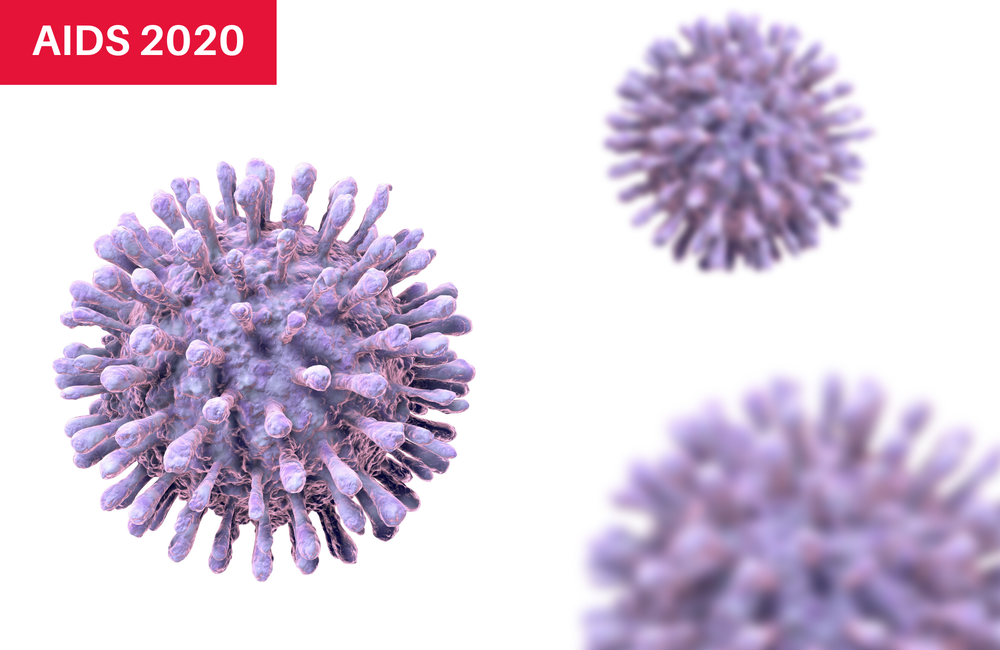
Two studies presented at the 23rd International AIDS Conference (AIDS 2020: Virtual) last week have increased interest in vesatolimod, a novel immune-activating drug.
The first study was conducted in macaques during the acute phase of infection with RT-SHIV (simian immunodeficiency virus containing the HIV reverse transcriptase, hence the acronym RT-SHIV) and showed that the combination of early long-acting injectable antiretroviral therapy and vesatolimod quickly suppressed viral load and delayed antibody responses to the virus.
The second study demonstrated that oral vesatolimod treatment triggers an immune interferon response that is dependent on the dose of the drug.
Vesatolimod is an agonist, meaning that it binds to cell-receptors specific to it, then increases their activation to stimulate a biological reaction. More precisely, vesatolimod is a Toll-Like Receptor-7 agonist, or TLR-7 agonist. Toll-like receptors are situated across the cell membrane; they recognise pathogens and, by signalling their presence, activate immune responses.
Because of its ‘activating’ capacity, TLR-7 has been used in HIV cure trials as a latency-reversing agent – the idea is that it reactivates latent infected cells from the HIV reservoir, which will then start to replicate again, and the resulting new virions can be destroyed with antiretroviral therapy.
Vesatolimod in acute infection in rhesus macaques
We already know that early antiretroviral therapy improves clinical outcomes by reducing the size and diversity of the HIV reservoir, limiting immune damage and delaying time to viral rebound after treatment interruption.
Could these outcomes be improved with early injectable long-acting antiretrovirals, which, with their prolonged concentrations in the body, may further increase the delay to viral rebound after treatment interruption? Also, could the addition of a latency reversing agent to this regimen further reduce the formation of the HIV reservoir by purging it during early viral infection and stimulating a more robust immune response?
These are the scientific questions that Dr Michele Daly and her colleagues, from the US Centers for Disease Control and Prevention, wished to test in macaques.
Ten animals were infected rectally with RT-SHIV. They were divided into three groups.
The first group of four macaques was used to look at early antiretroviral therapy alone. Plasma viral load was monitored and a four-drug regimen was started by day 5 to 6 after infection: daily oral emtricitabine and tenofovir alafenamide, plus monthly intramuscular long-acting cabotegravir and rilpivirine. The oral medications were stopped at month 6 and only the long-acting injectables were pursued until one year after infection.
The second group of four macaques evaluated early antiretroviral therapy combined with vesatolimod. The same antiretrovirals were started on day 6 to 8 after infection and in the following two to three days, the first weekly injection of vesatolimod was given. This timing ensured sufficient drug levels to confront the virus. Vesatolimod was stopped at month 3 and the antiretrovirals at month 4.
The last two rhesus macaques in the study did not receive any treatment and were therefore used as comparators, or controls.
Of note, all drug doses tested in the study were adjusted to the animals, but were equivalent to doses in human adults.
Compared to the controls, both treatment groups had reduced viral load during acute infection, with no significant difference between the two groups.
In the early antiretroviral-only group, which received cabotegravir/rilpivirine for one year, the four macaques still had undetectable viral load over a year after the last dose of injectables. Dr Daly insisted that this result is notable, as macaques in other studies of early antiretroviral therapy have had viral load rebound within three weeks of treatment interruption.
"Could the addition of a latency reversing agent to early injectable ART reduce the formation of the HIV reservoir?"
In the early antiretroviral/vesatolimod combination group, which received medication for a shorter period, viraemia remained suppressed seven months after treatment cessation (this group appears to have less follow-up than the other). Importantly, no viral blips were detected 24 hours after vesatolimod injections, which could have been expected due to the latency-reversing capacity of the molecule. Despite the very small size of the sample, Dr Daly and her colleagues found that this group achieved viral suppression faster than the other treatment group.
Of note, in the early antiretroviral therapy-only group, cabotegravir and rilpivirine were still detectable in plasma, up to 3.5 months and up to six months after the last doses, respectively. This persistence of drug levels for so long after injection indicates a potential role in keeping the virus controlled for an extended period, with widely spaced injections. Also, both groups had drug levels consistent with each other. In the group that received them together, no drug-drug interaction was found between vesatolimod and the two antiretrovirals.
Immune responses – which are expected to emerge following the acute stage of infection – were scrutinised. Unsurprisingly, the two untreated controls developed a full response, including HIV replication markers.
Responses were seen in both treatment groups. In the antiretrovirals-only group, the strongest was against gp 140 (an HIV envelope protein). However, it was not as robust as in the controls. It eventually waned during treatment, but no change was observed after treatment interruption.
The gp 140 response was similar in the antiretroviral therapy/vesatolimod group. But interestingly, it was slower to mount than in the other treatment group.
Vesatolimod and immune responses in human HIV controllers
The other study reported here was conducted in humans, and more specifically in HIV controllers, a subset of people living with HIV who control HIV replication without taking antiretroviral therapy for an unusually long period of time, but may need to start treatment at some point.
This was a randomised, placebo-controlled Phase Ib study of vesatolimod in HIV controllers taking antiretroviral therapy. The hypothesis was that oral vesatolimod may enhance immunologic control in HIV controllers who had a partially effective CD8 cell response before starting antiretroviral therapy.
Preliminary results presented at CROI earlier this year showed that vesatolimod was associated with a modestly increased time to viral rebound, decrease in viral set point and decreased intact proviral DNA.
The analysis presented at AIDS 2020 investigated the immunological mechanisms behind these findings. Twenty-four hours after the first doses of vesatolimod, there was an increase of interferon stimulated genes (gene products that co-ordinate and combat viral infections and other pathogens) and cytokines (chemical ‘messengers’ exchanged between immune cells that affect the function of the immune system). The higher the dose of vesatolimod, the greater the immune interferon response.
Dr Jeffrey Wallin from Gilead Sciences concluded that vesatolimod may play an important role in HIV cure innovations that would include vaccines aiming to trigger CD8 T cell responses.
Daly M et al. Infection outcome in RT-SHIV infected macaques treated early with antiretroviral therapy alone or in combination with the TLR7 agonist vesatolimod. 23rd International AIDS Conference, abstract OAA0203, 2020.
Wallin J et al. Vesatolimod, a toll-like receptor 7 (TLR7) agonist, induces dose-dependent immune responses in HIV controllers. 23rd International AIDS Conference, abstract OAB0205, 2020.

